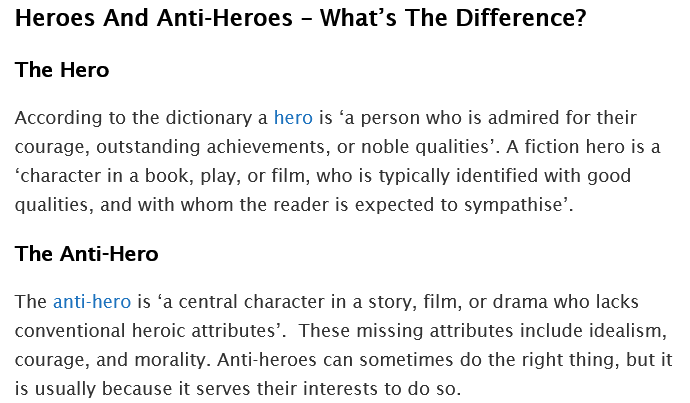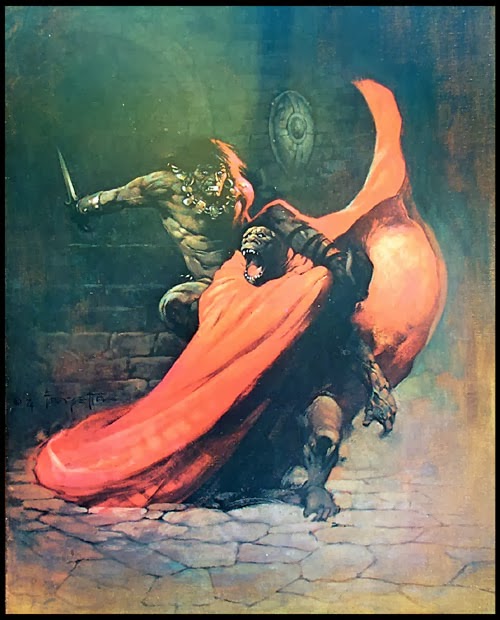by Gary Romeo
“Rogues in the House” first appeared in Weird Tales, January 1934. It was reprinted in the British “Not at Night” series in Terror By Night, Selwyn & Blount, August 1934 (and again reprinted in the U.K. in More Not at Night, Arrow, 1961). It was also included in Skull-face and Others, Arkham House, 1946 and The Coming of Conan, Gnome Press, 1953 before being included in Conan, Lancer Books, 1967.

L. Sprague de Camp did very little editing on this story. I only noticed three changes:
REH: There followed a great turmoil in the city, but search for the killer proved fruitless until his punk betrayed him to the authorities…
De Camp: There followed a great turmoil in the city, but search for the killer proved fruitless until a woman betrayed him to the authorities…
REH: “I want you to kill a man for me.”
“Whom?”
De Camp: “I want you to kill a man for me.”
“Who?”
REH: “Ha, a good stroke, Petreus!…”
De Camp: “Ah, a good stroke, Petreus!…”
De Camp leaves in a description of an “ornate mahogany table.” He had deleted “mahogany” in his edit of “The Gold in the Bowl.” Mahogany is indigenous to the Americas.
This story was adapted to comics in Marvel’s Conan the Barbarian #11 and Dark Horse’s Conan #41-44. The film Conan the Destroyer featured a Thak-like creature and the film Conan the Barbarian featured a scene where Conan is arrested while intoxicated that is similar to a scene in this story.
In the Lancer Series, this story follows “The God in The Bowl.” A fellow thief, a Gunderman, is mentioned. Most likely this character (although unnamed) is Captain Nestor from “The Hall of the Dead.” Some have suggested this story should have immediately followed “The Hall of the Dead” because of that.
When scholars and critics call Conan an anti-hero, this is the story most cited. Conan is brutal here. He is in jail for murder, makes a deal to murder again, and dumps a woman in a cesspool! The reader admires him for his skills more-so than for any heroic code in this incarnation.

Whether Conan is a hero or an anti-hero seems a “who cares?” conversation. He is definitely the star of this series and as he ages he becomes more of a hero than not. Placing the stories in a prehistory brutal environment influences the reader’s view in these “young” Conan stories.
This could be REH’s most cynical view of civilization. The story centers on three main characters (although several other characters do appear in the story.) Represented are three classes of society: the clergy, the bourgeoisie, and the proletariat.
The story opens with Murilo, an aristocrat, receiving an ominous gift. The ear of someone loyal to him. Murilo received the gift from Nabonidus. Nabonidus, the Red Priest, is the real ruler of the city. (The Red Priest’s religion is never made clear and “Priest” could be a misnomer of sorts.)
Murilo immediately seeks to employ a member of the lower class to do his dirty work. He had heard the story of Conan’s capture and now seeks to employ this killer and thief to murder Nabonidus. Conan sees the murder for hire contract as a way out of his present predicament. He has no qualms about cold-blooded murder in this instance. It is his only means to freedom, and he accepts it. Events conspire to delay Conan and lead Murilo to attempt the deed himself. Conan eventually escapes from jail but delays his rendezvous with the Red Priest to first seek revenge on the woman who betrayed him. The cavalier attitude with which Conan kills the woman’s new lover and dumping her into a cesspool underscores the casual cruelty that Conan is now accustomed too.
Conan is described as having a mighty body and thick muscled limbs. Conan is almost feral, speaking very little, and using all of his well developed senses. He discards a tattered tunic upon escaping and is naked but for a loincloth throughout the story. He acquires a “poniard” (REH describes it as a broad, double-edged blade, 19″ long). The “maze” in this story is similar to the “maul” in “The Tower of the Elephant.” These twisting turning back alley filthy streets are Conan’s urban jungle. Conan accepts the supernatural believing the Red Priest to be a were-thing at first and accepting that Nabonidus can perform true magick.
Eventually Conan and Murilo meet up in corridors below Nabonidus’ main quarters. Nabonidus has also been trapped with them. His “pet” Thak has taken over the house. Nabonidus is clearly the most educated of the bunch. He lectures Conan and Murilo on evolution and the history of this man-like ape that now has control of his house. Nabonidus devised an elaborate system of mirrors that allows him to see throughout the house. Murilo recognizes the genius behind it all, but Conan cannot comprehend it. He dismisses it as witchcraft. He believes the priest’s blood could be black as he has heard rumors of.
While the three “rogues” watch Thak, the house is invaded by a group of men. A small group of idealists are seeking to kill Nabonidus in what is undoubtedly the first step in a rebellion. The politics of the group is described as nationalist and patriotic. Nationalism usually implies a group opposed to foreign rule or the perception of foreign rule. I don’t think REH meant for this group to be more “rogues” in the house. Nabonidus’ control of the king, Murilo’s selling of state secrets, and the use of the word patriots to describe this group make me think that REH felt the rebels had valid reasons for their ire. However the rightness or wrongness of the nationalist cause is not what’s important to this story.
Thak, having studied Nabonidus’s ways, pulls a rope to unleash gray lotus dust. The rebels go mad and start fighting and killing each other. After witnessing this, Nabonidus decides they must rush up to the room and escape while Thak is disposing of the bodies. They do this and encounter a locked door. Conan must confront Thak.
Conan kills the man-ape but does not rejoice in the victory. He senses the intelligence in the creature. Nabonidus enslaved Thak on a whim and sealed his fate. REH and Conan realize the inhumanity of this. Conan states, “I killed a man, not a beast.”
Nabonidus tries to trick Murilo and Conan but decides to boast about his cleverness beforehand. Conan reacts instantly, smashing the priest’s head with a well-thrown stool. “His blood was red after all!”
Although not overtly so, this tale is more political than any previous Conan story. REH spends a good amount of time showing the reader that civilization is full of competing classes, political factions, and double-dealing between the strata. Conan is described as the most honest of the three because he steals and murders openly. Arguably the rebels are fighting for something better, but that would be temporary at best in REH’s long term view of civilization.






I think the reason for Nabonidus’s description as a priest (of whatever stripe) is to be found in him being the RED priest and the real power in the city. I don’t know if it’s been brought up anywhere before, but Howard most likely meant him to be an echo of Cardinal Richelieu, the “Red Cardinal” and power behind the throne in the France of Louis XIII. Richelieu’s priestly office was important in that it gave him status and a leg up to power, but it was plainly not as pertinent to those who dealt with him as that power itself. Tales involving Richelieu rarely show him in performance of his priestly office, but rather as a cynical and all-knowing schemer. So with Nabonidus.
Looks like Ross E. Lockhart sorta kinda recognized the Richlelieu angle. See: https://www.haresrocklots.com/words/essays/howard/